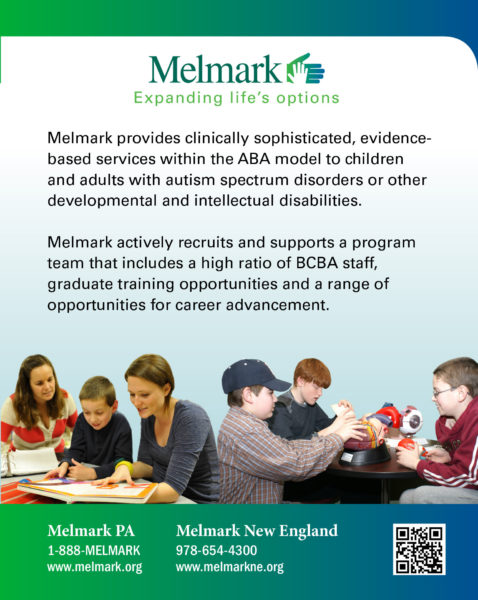As the amount of data recorded in classrooms continues to expand, so, too, does the opportunity for individual, organizational, and systemic improvements informed by that data. One area of increasing focus is the collection and analysis of health and wellness data, collectively known as health informatics. This article will give insights into how the modern service organization can leverage health informatics data like sleep, weight, well-body checks, and unusual incident tracking into real and meaningful improvements in student safety and wellness.

Andrew Shlesinger, MSW, LICSW
Director of Clinical Technology
Common Measures of Health and Wellness
Sleep, weight, diet, well-body checks and unusual incident tracking are several common measures of health and wellness. Our organization, for example, has developed database applications for each of these critical measures, including an application to record sleep quality throughout the night, weight and height on a weekly and monthly basis, well-body checks twice daily and real-time unusual incident tracking. These applications allow for real-time reporting, charting, emailing, alerting and graphing of the data, making analysis timely and convenient.
Sleep – Research carried out at Melmark has shown sleep quality, measured by variables such as time to sleep onset, total continuous hours of sleep, and total hours of sleep, impacts both academic and behavioral performance the following day. Sleep quality data, therefore, can be used to inform better treatment by tailoring the next day’s academic and clinical work. For example, if the data shows a client is likely to have more clinical behaviors following a night with less than four hours of continuous sleep, the behavior plan can be written to address that condition separately, possibly calling for a greater frequency of reminders, increased vigilance upon antecedents, or increased break opportunities. Academically this data can guide the frequency of lesson delivery, the types of lessons taught, and frequency of breaks, as just a few examples.
Comprehensive sleep data is also critical for sharing with the client’s health care team. Doctors, psychiatry providers, prescribers, and nurses highly value this data, which is often a key variable for informing treatment decisions.
Weight and Diet – Weight is another key factor in health and wellness. Keeping a close eye on the height and weight of all your clients will give you and your medical providers insight to guide the individual’s medical plans, meal plans, and exercise routines. We have developed a database which calculates Body Mass Index (BMI) from regular height and weight measurements and uses that data to build a profile at one-, three-, and six-month intervals. This data, in turn, is used to automatically inform health care staff of cases that meet criteria for excessive weight gain or loss over those intervals, in real-time, so effective change can be made before the issue becomes critical.
Well-Body Checks – The ubiquitous “well-body check,” where staff check over the body of the individual for any marks, bruises, scratches, etc., is most often carried out by marking up an outline image of the front and back of a body on paper forms. The major issues with this method is the data is onerous to analyze across dozens of forms, and the data is duplicative because marks on the morning form, for example, are often re-recorded over and over, form by form, until the issue resolves.
Collecting this data into a database eliminates both of these issues by keeping the data in one location and never duplicating a report from check to check. Melmark uses a database application that allows the user to record his or data on a display of the typical body outline. The data marked on the form goes into a database for real-time reporting and analysis. In this way, a profile can be formed regarding each individual’s well-body health which is used to inform measurable improvements for the individual. A self-injurious individual, for example, may have hundreds of self-injurious behaviors a day recorded to what seems like random parts of the body. A trend analysis of well-body data over months, however, may discover a very specific area that should be addressed first, as it causes the most injury despite accounting for only a small percentage of the overall behaviors. This type of insight can then inform a more focused, personalized treatment protocol targeted towards the largest decrease in behaviors that causes injuries.
Incident Tracking – Comprehensive incident tracking, often referred to as “unusual incidents,” provides your organization with an abundance of useful, actionable information to improve the well-being of individuals and inform organization-wide systemic improvements that benefit all your individuals. In this way, incident tracking can be so much more than meeting regulatory or internal reporting requirements; it can be the foundation to a better program.
Incident tracking databases tend to have many dozens of measures, so it is important to take the time to ensure you have identified the right measurements to record. After accounting for any measures (“fields”) required by regulatory authorities, you want to add your own fields that speak to kind of reporting you want to get from the dataset. For example, by regulation you may be required to record the general location of the incident, like “residence,” for a fall that happened in the residence. But for the purposes of organizational improvement, you may want to have a second, more specific field, like “lower-level bathroom” because that will give you enough information to investigate if the environment played a role in the incident. If so, that environment could be modified to make it safer for walking, or new policies, like not leaving a floor wet, could be implemented.
Spreadsheets and Databases
Spreadsheets – The first step to improved health informatics data collection is choosing the data collection platform. Spreadsheets and databases are the two main technologies used for the recording of data, but they are not interchangeable. Spreadsheets are essentially tables in which data can be entered directly, manipulated by formulas, graphed and analyzed. Almost all organizations work with spreadsheets, like Microsoft Excel and Google Sheets, on a daily basis. Spreadsheets are useful for smaller, simpler datasets that have single tables, and are often the first choice for small organizations to get started organizing their health data in a format which can produce immediately useful graphs and charts for analysis.
Databases – Databases, like SQL, are quite different. A database is collection of data that is organized, usually into multiple tables of data with defined relationships between the data from table-to-table and across the database. Databases are structured to match the real-world situation for which they are collecting data; they are not merely large spreadsheets. Using the previous examples, the sleep, weight, well-body, and incident databases can be brought together in way which maintain relationships between the data across all the tables within all the databases. This consolidation of data results in far more robust reporting and analysis capabilities on the individual and organizational level. Consolidation of data allows you to quickly analyze the individual’s sleep quality versus weight, and likelihood of involvement in an incident the following day, for example. As long as there are common threads, like individual name, location, even specific interventions, those relationships can be used to connect and analyze data in bigger ways. At the organizational level, you can connect the dots between specific locations, or staff, or intervention types in your organization and analyze the interplay among them, discovering connections that inform program-wide improvements.
Workflow and Automation – Procedural, reporting, and alerting workflow can be custom programmed into both spreadsheets and databases. Often, rule-based, repetitive procedures like emailing a form to a supervisor upon submission or emailing nursing upon a well-body check report or weight issue are programmed to occur automatically. Beyond reducing work for staff, this type of workflow can give an organization the peace of mind that important alerts and processes that require action are not being missed. This workflow can mean the difference between treating proactively, like modifying the diet of an individual who is starting to gain weight at an unhealthy rate, versus reactively, like acting only when staff has already visually noticed unusual weight gain. Automating workflow can also help ensure your organization meets regulatory requirements in much the same way.
The Final Analysis – Benefits to Individuals, Staff and Organizations
Health informatics data empowers your organization to improve the health, safety and wellness of individuals, clients and staff, while informing decisions that can improve the organization as a whole. Connecting the dots between individuals’ health measures, outcomes, and organizational measures can unearth invaluable insights that become the foundation of continuous improvement. Adding automated intelligence like workflow, regulatory requirements, emailing, and alerting to your database applications brings further efficiency and peace of mind to your individual and your organization.
For more information, please visit www.melmark.org or www.melmarkne.org.





